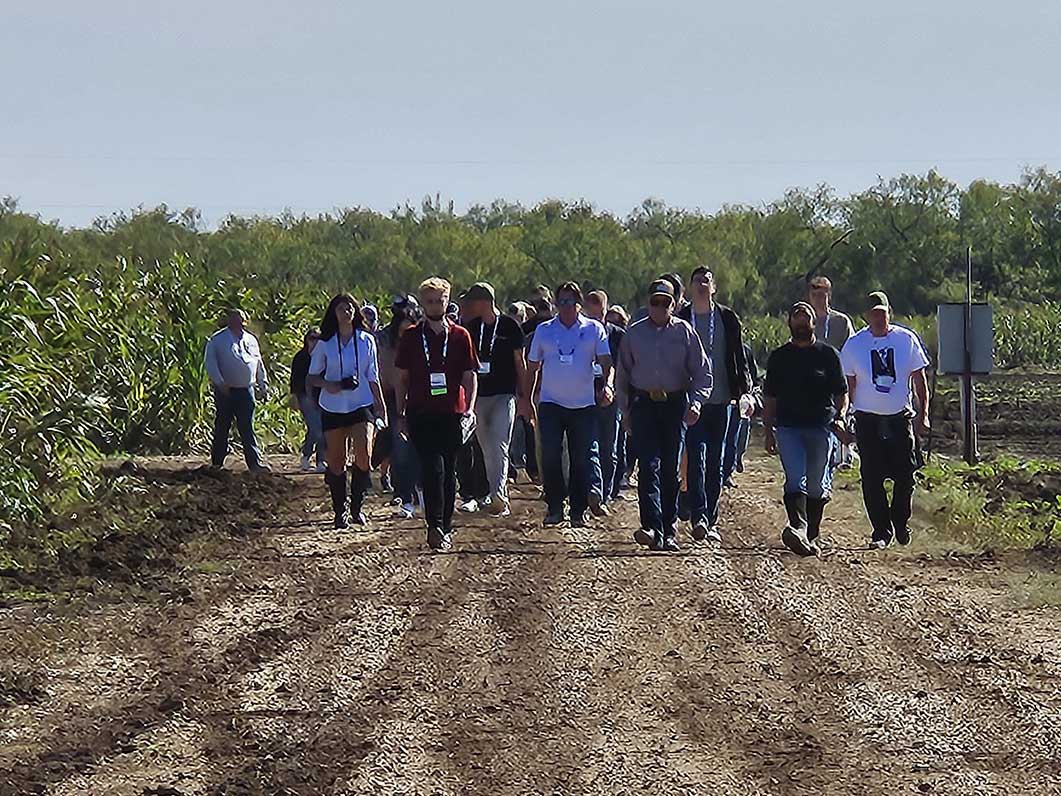
By René Hardwick
National Onion Association
In one week, more than 200 NOA members and onion researchers enjoyed the sights of downtown San Antonio, and learned a lot about how our nation’s top onion industry researchers are working to find the best ways to combat diseases such as Stemphylium Leaf Blight, Iris Yellow Spot and Pink Root, and enjoyed the camaraderie of the one association in the country shepherding onion growers into a new era of food safety and legislative involvement.
The NOA’s annual meeting indeed held people’s interest, and sessions of the accompanying National Allium Research Conference had people overflowing out the session doors of the Marriott Riverwalk Hotel to learn about the latest research into many common onion problems.
One key discussion was from Dr. Brian Nault of Cornell University. He has been studying how to combat insecticide resistance for years, especially in muck soils where crops are not rotated. His experience has been especially important in the wake of the EPA ban on chlorpyrifos, the one tried and true, no-holds-barred-maggot-killing insecticide that onion growers and several other crops nationwide have relied on for years. Because of this growing resistance to chlorpyrifos on eastern onion farms, Nault suggests a staggered system of insecticides to reduce resistance that may also be helpful for western growers whose reliance on chlorpyrifos is expected to end, even with current challenges on the EPA ban.
In the second official meeting of the NOA’s new Food Safety Committee, Gills Onions owner Steven Gill out of Oxnard, Calif., helped members understand the many steps that he had to take to clear up a food safety event at his processing plant in California in the last few months. Gill stressed that this committee should serve as a resource for growers throughout the country to reach out to members to get some help if they are involved in any food-borne illness outbreaks in the future.
The NOA created this committee in the wake of back-to-back salmonella outbreaks that the FDA said involved onions in 2020 and 2021. The 2021 outbreak was linked to a farm in Chihuahua, Mexico. During the NOA’s general session at the convention FDA investigator Kurt Nolte discussed the ongoing discussions with Mexican food safety agencies and the farming community to prevent any further food borne pathogens from entering into the U.S. through Mexican commodities. In fact, Nolte said, the NOA’s recent updated Best Practices in Onion Guidelines have been distributed to onion farmers in Mexico.
“We made it very clear this was a very well written document and should be available to onion growers throughout Mexico,” Nolte said. “We provided that and it has been translated into Spanish. This document is a well-rounded good foundation for starting food safety programs in Mexico.
“We heard loud and clear that we were not doing enough in Mexico, and now we are,” Nolte said.
Both groups also had the chance to visit Cargil Farms. Steve Cargil showed the group some of his cabbage fields. Onion fields were planned, but rain created a lot of mud which would have gotten the buses stuck in the muck, so to speak. The group also was treated to a barbecue lunch at the Texas A&M AgriLife Research Center.
The NOA’s next meeting is its summer meeting, planned for June 25-29 in Anchorage, Alaska.
Many thanks to René for providing OnionBusiness with some great photos from the event. Click the image to enlarge and scroll.


